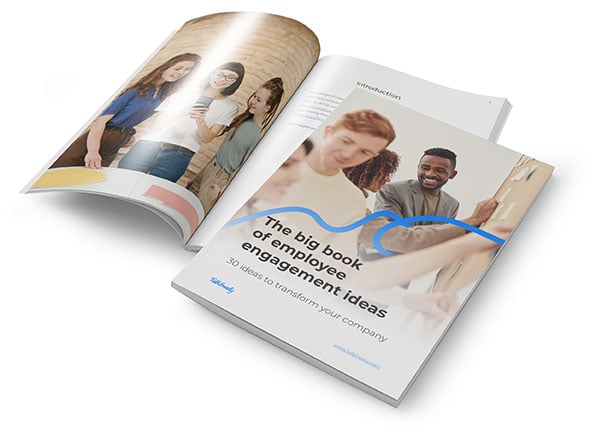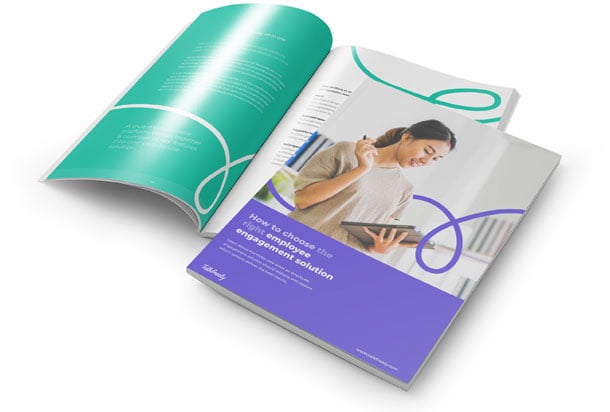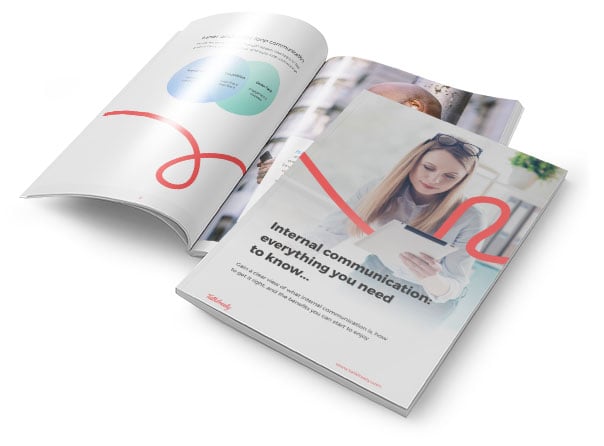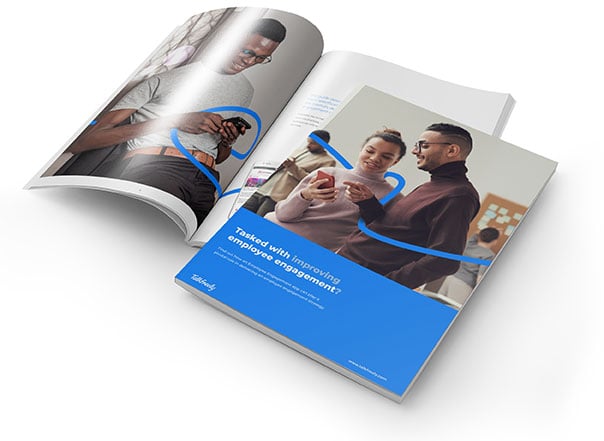Innovation doesn’t just happen. Every ‘eureka’ moment needs a process whereby it can be taken from a spark of inspiration to its final implementation. History is littered with innovative ideas that never got implemented, such as the famous plans for flying machines and helicopters drawn by Leonardo Da Vinci.
For innovation to transfer from drawing board to reality, your business needs a systematic process that is practical, sustainable and repeatable. A successful innovation process creates a ‘production line’ for ideas, processing raw suggestions into real business benefits.
Innovation and engagement
Employee engagement is the process of communicating with your employees and providing them with a simple and accessible way to make valuable suggestions and have their voice heard.
By engaging with your employees, (and your customers and suppliers), your business can open up new opportunities for innovation, focused on your current and future business goals.
The eight stages of the innovation process
We have distilled the requirements for implementing innovation down to eight key stages.
1. Challenge
Innovation can be kick-started with a Challenge. Issue a Challenge to your whole organisation as a one-off initiative to reach a major business goal, or to smaller, defined User Groups with specific skill sets. Or simply ask for ideas and suggestions that your employees already have, waiting to be heard.
2. Socialise
Ideas are like puppies; they need to be socialised early! An innovation management solution should always include a safe and supportive environment where ideas can be initially submitted and discussed. A cloud-based virtual community space is ideal, especially when part of an active employee communication and engagement network or app. Ideas can be submitted anytime, and discussed and commented on, to refine, improve and evolve the original idea.
3. Share
Ideas that emerge organically, as opposed to part of a Challenge, will need a helping hand in terms of their profile and exposure. By linking your employee-driven innovation process to your employee app or communication platform, you can share embryonic ideas to the wider community for feedback, rating, and further enhancements. Sharing also enables your business to tap into the ‘wisdom of the crowd’, allowing those with previously hidden skills, knowledge and experience to be part of the ideation and innovation process.
4. Evaluate (Sifting and shaping)
Yes, we’ve now put evaluate before qualifying! (We’ve changed our minds on this.) The reason is that ideas can be evaluated more easily and effectively through a collective and cumulative response, rather than an individual manager’s judgement. Peer to peer ranking, collective interest and interdepartmental collaboration in a virtual workspace allows great ideas to rise to the top through a process of interactive sifting and shaping.
5. Qualify
Not every idea will be practical, feasible or affordable. Your innovation process needs to start getting tough at this point, drilling down into the hows and whys of an idea. However, here too the supportive online community can help, by taking on aspects of this review process and submitting their findings to managers in an open and transparent way. Your managers can then make better, more informed selections of ideas to take forward.
6. Plan
This is where the work starts on the chosen idea(s) - allocating resources, forming virtual teams to tackle aspects of the development, planning the route through to final implementation. Managers should fully exploit the interest and energy these ideas have gained through the above processes. They can garner help, collaborate and cooperation between employees who may never have met, let alone worked together before.
7. Implement
Innovation means change, whether it’s disruptive innovation that alters the entire way you work, or incremental innovations that re-shape the services, products or working practices. In either case, you and your employees need to be ready for the changes, so that innovative idea can enjoy a smooth transition into reality.
8. Benefit
It’s vital to track the progress of any implemented idea via crucial business markers such as employee engagement, as well as the bottom line. Your innovation process should include robust reporting and monitoring, to enable full assessment of the impact of innovation. It will also enable your business to know what was done well, and what needs improvement when putting the next idea through the process.
Other key elements of a successful innovation process
Funnel not tunnel
The innovation process has been likened to a funnel. However, too often in the past, that funnel became a tunnel, into which ideas disappeared without acknowledgement or information on the outcome. An effective innovation process must be transparent from start to finish. It must allow ownership of ideas by their original creator, whilst allowing those involved in its development to follow progress and remain engaged.
Celebration
When an idea becomes reality, celebrate in style! Make sure everyone involved knows the outcome of ‘their’ innovation. Celebrating the success of one innovation company-wide will, in turn, inspire employees to participate in the next Challenge or idea submission initiative.
Rinse and repeat
Sustainable innovation is a constant cycle of ideas flowing through the process. At any given point, ideas should be at all eight stages outlined above, delivering a flow of innovation that is at the heart of how your business does business.
Ideas bank
In the squeeze of the innovation funnel, some ideas will be rejected not because they are poor, but because it’s just not the right time. An idea bank allows your business to store ideas that just might be the answer to a problem in five months or five years’ time.
Topics:
Innovation Management







